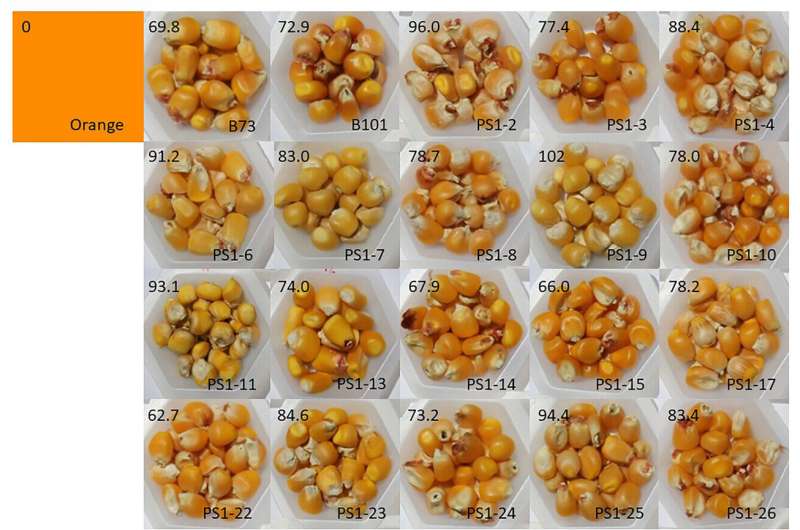This article has been reviewed according to Science X's editorial process and policies. Editors have highlighted the following attributes while ensuring the content's credibility:
fact-checked
trusted source
proofread
Scientists ratchet up key amino acid in corn

Experimental lines of field corn developed by a team of Agricultural Research Service (ARS) and university scientists will usher in new commercial hybrids offering high-methionine grain.
The advance, reported in a recent issue of Crop Science, will be especially welcome news for organic poultry producers whose birds require dietary formulations of the amino acid to ensure optimal growth, health and production of meat and eggs.
As one of nine essential amino acids and only two that contain sulfur, methionine helps kick-start the synthesis of proteins and is a key component of many tissues, including bone, muscle, ligaments, organs, skin and feathers in poultry. Methionine also underpins important metabolic, digestive and immune system functions.
In organic production systems where pasture is available, free-ranging chickens and other poultry can naturally acquire methionine from eating worms, insects and certain plants. However, supplementing their diets with synthetic methionine in corn-based feed is necessary to ensure the birds get adequate amounts of the amino acid.
Organic producers can do this under a federal regulatory exemption that permits a maximum use of two pounds of synthetic methionine per ton of feed for chickens and three pounds per ton for turkeys, ducks and other types of poultry. Meanwhile, research is underway, including this project, to find natural alternatives whose cost and availability promise to supplant the need for synthetic methionine altogether.
Corn, for example, is a major ingredient in current feed rations; however, grain from commercially grown hybrids contains very little methionine. Fortunately, there are sources of variability for the trait in germplasm collections that can be teased out with the right tools.
Genetic engineering offers one approach; however, transgenic crop varieties aren't permitted in organic production systems. To address this issue, ARS plant geneticist Paul Scott and colleagues combined the use of two conventional plant breeding methods—namely, doubled haploid induction and recurrent selection.
Using these methods, they developed 16 lines of inbred corn whose methionine grain levels equaled—and in one case, surpassed—that of B101, a hybrid that has been shown to be a useful benchmark of comparison because of its naturally high concentration of methionine. "B101 usually measures about 0.29 grams of methionine per 100 grams of grain, and our best lines have about 0.37 grams per 100 grams," said Scott, with the ARS Corn Insects and Crop Genetics Research Unit in Ames, Iowa.
As an added bonus, some of the inbred lines also showed considerable genetic diversity in certain agronomic traits when evaluated in field trials—plant height, flowering date, disease resistance and orange-colored kernels among them.
Additional evaluations are planned, including poultry feeding trials.
"It will be important to test these lines in hybrid combinations and in different environments to understand how stable the trait is and what their yield potential is. Also, we'd like to combine high methionine with other traits of value to organic poultry producers," said Scott. "Orange grain is one we're working on now, as well as the ability to exclude transgenic pollen. Ultimately, we'd like to develop corn that can provide a complete diet with no supplementation."
More information: Taylor D. Hintch et al, Development of maize inbred lines with elevated grain methionine concentration from a high methionine population, Crop Science (2023). DOI: 10.1002/csc2.20983
Provided by United States Department of Agriculture





















